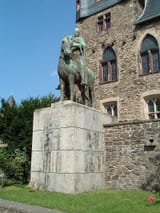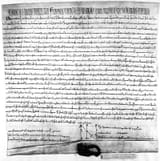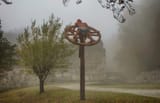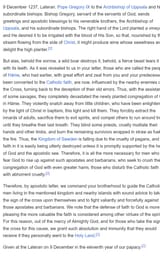I'll start with the life and eventual murder of Archbishop Engelbert I. of Cologne.
He was born as the second son of the Counts of Berg and was thus set for an ecclesiastical career. He worked early on in the Archdiocese of Cologne - but in the early years of the German Throne Dispute (1197 - 1215; a conflict between the dynasties of Staufen and Welf/Guelph over the matter of succession of the next Emperor of the HRE) he ttok the side of the Staufer and waged a little war within the Archdiocese of Cologne. For this he was actually banned by the Pope in 1206 but already pardoned in 1208. For the remainder of this conflict Engelbert remained neutral, joined briefly the Albigensian Crusade and in 1216 he became the Archbishop of Cologne (he still had to pay reparations towards the Pope for the destruction he caused earlier).
1/3
In 1218 Engelberts older brother died without male heirs - but he sired a daughter who was married to the son of the Duke of Limburg. According to the common law, the County of Berg would have fallen to the Limburgers but Engelbert intervened militarily and after two feuds secured his rulership over his fathers county. It probably helped that Engelbert was a close friend to Emperor Friedrich II. of the Staufer line, for whose cause he previously fought. Engelbert used his influence with the emperor to secure further concessions for the ecclesiastical rulers of the HRE (like the right to mint coins, raise tolls and to freely build castles). Engelbert used those rights to greatly improve the territory of the Archdiocese of Cologne by founding cities and taking over territories previously owned by lesser nobles - often with the threat of violence.
2/3
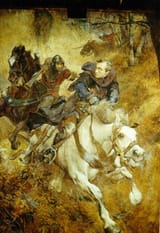
This eventually led to the formation of a coalition against Archbishop Engelbert, which was likely led by the Duke of Limburg and the Count of Isenberg. In 1225 Isenberg and his men intercepted Engelberg. It is likely that they wanted to capture the Archbishop in order to force concessions but Engelbert, being 1,80 m tall and a battle proven knight, fought back despite being outnumbered. Eventually he was slain but this was a severe blow for the cause of Isenberg - he essentially became the fall guy for the plot and thus tried to save his neck. Firstly he tried to bury the dead Engelberg in the city of Schwelm but the local clerics denied this request. He then tried to bury the dead Archbishop in his ancestral castel but here too Isenberg was denied. Still with the dead body in his luggage, Isenberg was finally able to bury Engelbert at the Cistercian Monestary of Altenberg. But the cat was out of the bag - travelling with a dead Archbishop as part of ones retinue isn't exactly stealthy. In 1226 Isenberg was captured and broken on the wheel in Cologne. His castle was slighted by the Count of Mark (a relative of Engelbert) and his subjects were relocated. Still, the power of the Archdiocese of Cologne from that point onwards would decline slowly but steadily. And the County of Berg? It still fell towards the Limburg who raised it into a Duchy and eventually it eclipsed the Archdiocese in power too.
3/3
A contemporary artist even made a sculpture about Isenberg being broken on the wheel
>The Tavastian uprising, also sometimes called the Häme uprising, was a uprising by Tavastians in Tavastia, Finland in the winter of 1236–1237. The rebellion was against the Kingdom of Sweden and against the Catholic Church.
>>213176347>The Tavastian rebels received aid from the Novgorod Republic, which sought to diminish Swedish influence in Finland in order to bolster its own positionSpecial Military Operation status?

